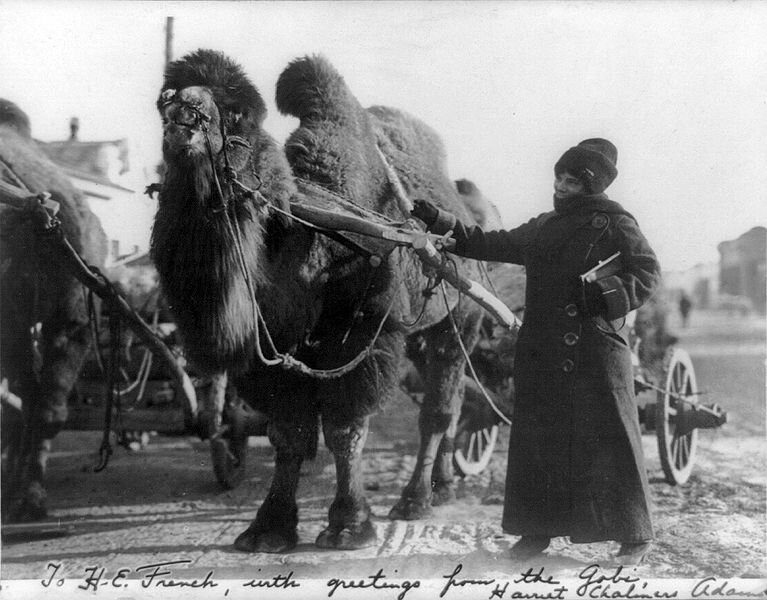Harriet Chalmers Adams - Trailblazing Explorer
Looking through my research files, I came across snippets I’d collected about female explorers. To my surprise, I realised I haven’t blogged about these amazing women.
Harriet Chalmers Adams, the first president of the then newly formed Society of Woman Geographers, was born in Stockton, California in 1875.
Schooled at home, she became fluent in Spanish and was competent in a handful of other languages, including French and Italian.
When she was 8, she accompanied her father when he explored the Sierra Nevada on horseback. That may well have been what started a lifelong obsession with travelling and exploring the world.
In 1899, she married Franklin Pierce Adams, who matched her sense of adventure and exploration.
Franklin’s job in South America was the catalyst for the couple’s first major expedition. Between 1904 and 1907, they travelled around South America, visiting every country, together and independently.
For me, what makes their journey truly remarkable is the fact it was undertaken at a time when there was little, if any, reliable information about South America, it’s lands and the indigenous people. The only dependable form of transport would have been the horse. Yet, far from daunted, they traversed the Andes on horseback and canoed down the Amazon River, amongst other things. In total, they covered 40,000 miles.
When they returned to the United States, they made their home in Washington. It was there that Adams approached the National Geographic Society with colour photographs of the places and people she’d seen in South America. Most fortuitously, she’d also recorded a few movies of her travels.
Luckily, they saw her for the intelligent, capable and talented woman she was; she could tell a good story and she was an accomplished photographer.
She wrote for the National Geographic for 50 years, their most prolific female contributor, while also writing for other publications.
During the First World War, she served as a correspondent for Harper’s Magazine in Europe and was the only female journalist allowed to visit the trenches.
In 1913, Adams was admitted to the Royal Geographical Society in Britain. But, because she was a woman, she was not allowed to join the Explorer’s Club in America.
That exclusion may well have been the spark for her to help launch the Society of Woman Geographers in 1925. Adams served as its president for 6 years.
In the 1930s, Adams and Franklin visited eastern Bolivia, Trinidad, Surinam and Peru. In addition, she wrote about the trans-Andean railroad between Buenos Aires and Valparaiso in Chile.
The couple also visited North Africa, Turkey and Western Europe. In Asia, they visited Siberia, the Gobi Desert and Sumatra. In time, they settled in France.
Harriet Chalmers Adams in the Gobi Desert (wikipedia)
Adams was a charismatic woman, enthralling audiences with her flair for telling stories, laced with authenticity and humour.
Harriet Adams died in 1937, aged 61, in Nice, France, and she is interred at the Chapel of the Chimes in Oakland, California.
A 1912 New York Times article, ‘Woman Explorer’s Hazardous Trip in South America’, includes a quote by Harriet Chalmers Adams concerning women adventurers:
“I’ve wondered why men have so absolutely monopolised the field of exploration. Why did women never go to the Arctic, try for one pole or the other, or invade Africa, Tibet or unknown wildernesses? I’ve never found my sex a hinderment; never faced a difficulty which a woman, as well as a man, could not surmount; never felt a fear of danger; never lacked courage to protect myself…”
It seems odd that such a powerhouse of a woman is not more well known.

